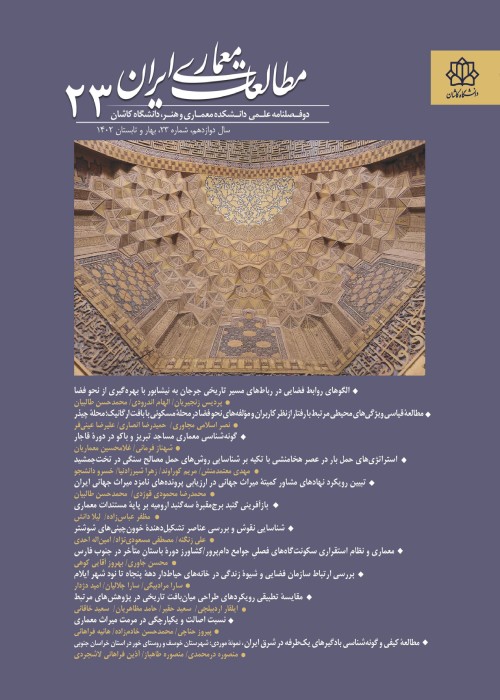Identifying the Subjective Patterns of Experts Regarding Visual Literacy in Iranian Architectural Heritage Education for Elementary School Children
Author(s):
Article Type:
Research/Original Article (دارای رتبه معتبر)
Abstract:
This study aims to raise public awareness regarding Iranian architectural heritage values by identifying the dominant subjective patterns of experts regarding “visual literacy in Iranian architectural heritage education for children” with an emphasis on informal education. What we mean by visual literacy in Iranian architectural heritage is the ability to comprehend and interpret architectural heritage features and values. This study is exploratory in nature since it attempts to identify and extract the subjective patterns of experts. The research data was collected through a survey using the Delphi technique and the results were analyzed through Q factor analysis. Thus, the research process has four steps: 1) interview with experts, 2) analysis of interviewees’ transcripts with open and axial coding, designing the target-content table and the researcher-made questionnaire, 3) Delphi survey in two steps, 4) and Q factor analysis using SPSS-22 software. The statistical population comprises experts in the fields of architecture, preservation of monuments, archaeology, graphic design, and children educators (formal and informal). In the first step, 10 experts were selected and sampling was continued using the snowball sampling method until theoretical saturation was reached. In the Delphi survey, 30 experts were selected using the non-random purposive method. The results obtained from factor analysis introduced eight dominant themes of visual literacy in Iranian architectural heritage education among experts. These dimensions include extra-physical-conceptual, aesthetic, heritage-preservation, spatial perception, interactive-group, individual experiences, learning environment, and social-cultural context. Furthermore, the subjective patterns of experts, according to the multidimensional aspects of the topic, included the study of architectural heritage works (semantic, aesthetic, heritage-preservation, and space orientation), attention to the learner (individual, interactive), and learning conditions (contextual, cultural-social). The dimensions mentioned above can pave the way for visual literacy education in children with an emphasis on informal techniques.
Keywords:
Language:
Persian
Published:
Journal of Iranian Architecture Studies, Volume:11 Issue: 21, 2022
Pages:
107 to 130
magiran.com/p2527417
دانلود و مطالعه متن این مقاله با یکی از روشهای زیر امکان پذیر است:
اشتراک شخصی
با عضویت و پرداخت آنلاین حق اشتراک یکساله به مبلغ 1,390,000ريال میتوانید 70 عنوان مطلب دانلود کنید!
اشتراک سازمانی
به کتابخانه دانشگاه یا محل کار خود پیشنهاد کنید تا اشتراک سازمانی این پایگاه را برای دسترسی نامحدود همه کاربران به متن مطالب تهیه نمایند!
توجه!
- حق عضویت دریافتی صرف حمایت از نشریات عضو و نگهداری، تکمیل و توسعه مگیران میشود.
- پرداخت حق اشتراک و دانلود مقالات اجازه بازنشر آن در سایر رسانههای چاپی و دیجیتال را به کاربر نمیدهد.
In order to view content subscription is required
Personal subscription
Subscribe magiran.com for 70 € euros via PayPal and download 70 articles during a year.
Organization subscription
Please contact us to subscribe your university or library for unlimited access!



